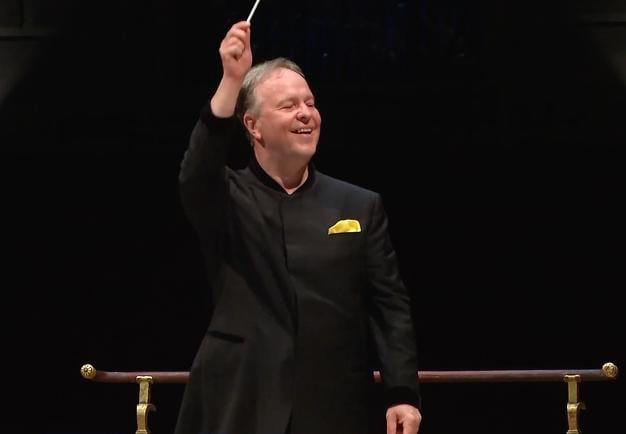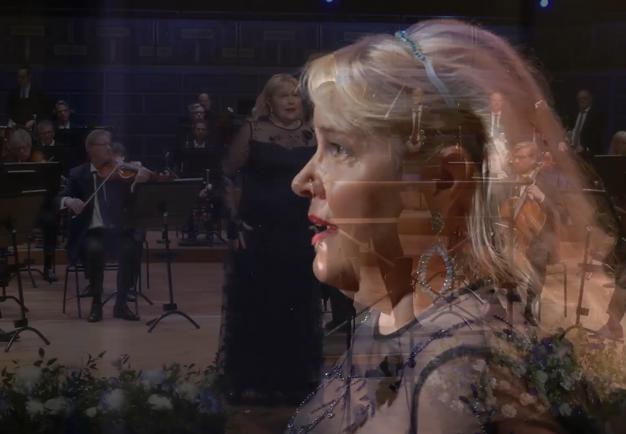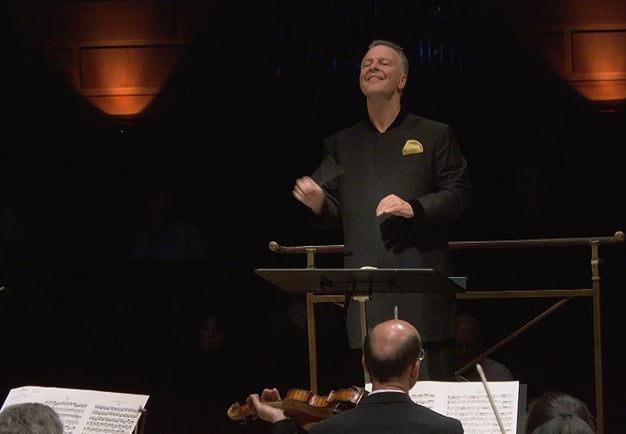Grande Finale – Sibelius with Oramo IV
Sakari Oramo leads the Royal Stockholm Philharmonic Orchestra in Sibelius’ Symphonies No. 6 and 7 as well as Two pieces for cello and orchestra with Johannes Rostamo as the soloist.
About the video
- From a livestream 29 May 2021.
- The video is approximately one hour and 32 minutes.
Grand Finale: Sakari Oramo’s final concerts as chief conductor of the Royal Stockholm Philharmonic Orchestra were an in-depth journey through Jean Sibelius’ creations, including all seven symphonies in chronological order. “In his case specifically, I believe the order matters”, said Sakari Oramo. “He worked on several symphonies simultaneously, and there are always elements in one symphony that can be detected in the symphony preceding it.”
The sketches for Symphony No. 6 date back to 1914 and he worked on the fifth and sixth symphonies simultaneously – soon, even with thoughts of Symphony No. 7. “I have Symphonies VI and VII in mind. And a reworking of Symph. V,” he noted in his diary. Time slipped away, years passed, he was stressed and anxious. At last, in 1923, the world premiere of the three-movement Symphony No. 6 took place. But is it actually three movements? Symphony No. 7 was to become a “symphonic fantasy” in a single movement, and the sixth is similar: the movements are all parts of a whole, with a freer form and subtle transitions.
The war had broken out, and between symphonies, Sibelius delivered smaller pieces in order to handle his growing financial debts in some capacity. But Two Pieces for cello and orchestra Op. 77 came to be not only to put food on the table. The first part is entitled Cantique: Laetare anima mea (Song of Praise: Rejoice my soul) and the second, Devotion: Ab imo pectore (Devotion: From the depths of my heart). The piece, which also exists in a version for violin, had its world premiere in 1916 by the Helsinki Philharmonic Orchestra, with the cello solo performed by Ossian Fohström, and led by Sibelius himself. Here, the Royal Stockholm Philharmonic Orchestra’s Finnish solo cellist Johannes Rostamo performs the solo.
On 2 March 1924, Sibelius wrote: “Tonight I finished Fantasia sinfonica I.” The Royal Stockholm Philharmonic Orchestra presented the world premiere of the piece under this title in Stockholm on 24 March 1924, together with Symphony No. 1 and the Violin Concerto. Sibelius himself conducted. He subsequently changed the title to Symphony No. 7. “An enormous success. My new piece is certainly one of my best,” he wrote to his wife Aino. Given that the sketches for the piece stemmed from the time of the fifth symphony, the music had upwards of a 10-year prehistory. The result is magnificent: the tremendous concentration of this music has led to a solid, dense, intensely colourful piece in a single movement.
Symphony No. 7 is a worthy farewell to the art of the symphony in Sibelius’ highly personal style, even if the lost Symphony No. 8 continued to elude researchers.
-
The music
-
Jean Sibelius Symphony No. 6
-
Jean Sibelius Two Pieces for cello and orchestra op 77
-
Intermission: Conversation with the artists
-
Jean Sibelius Symphony No. 7
-
Participants
-
Royal Stockholm Philharmonic Orchestra
-
Sakari Oramo conductor
-
Johannes Rostamo cello




